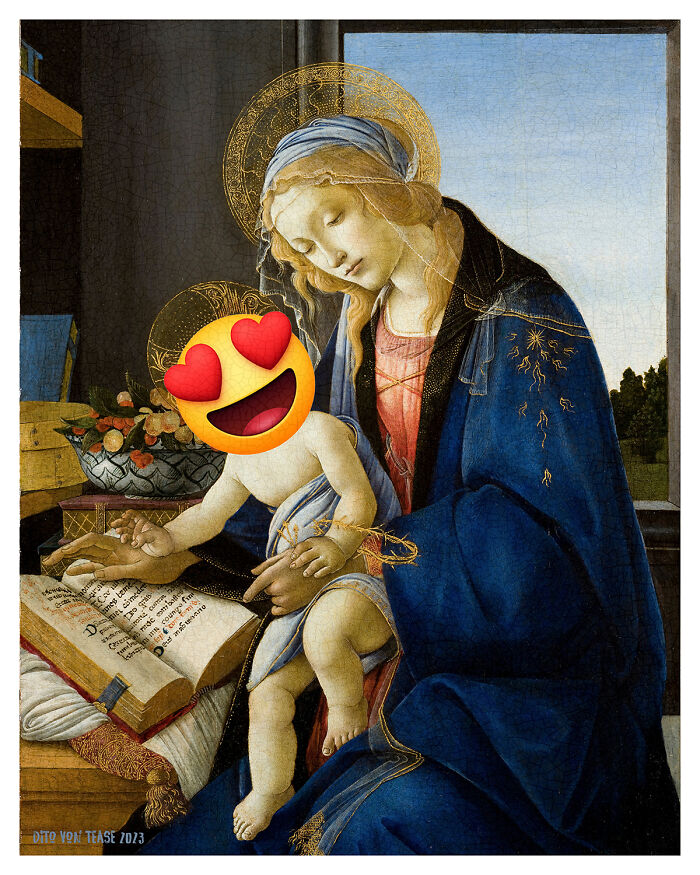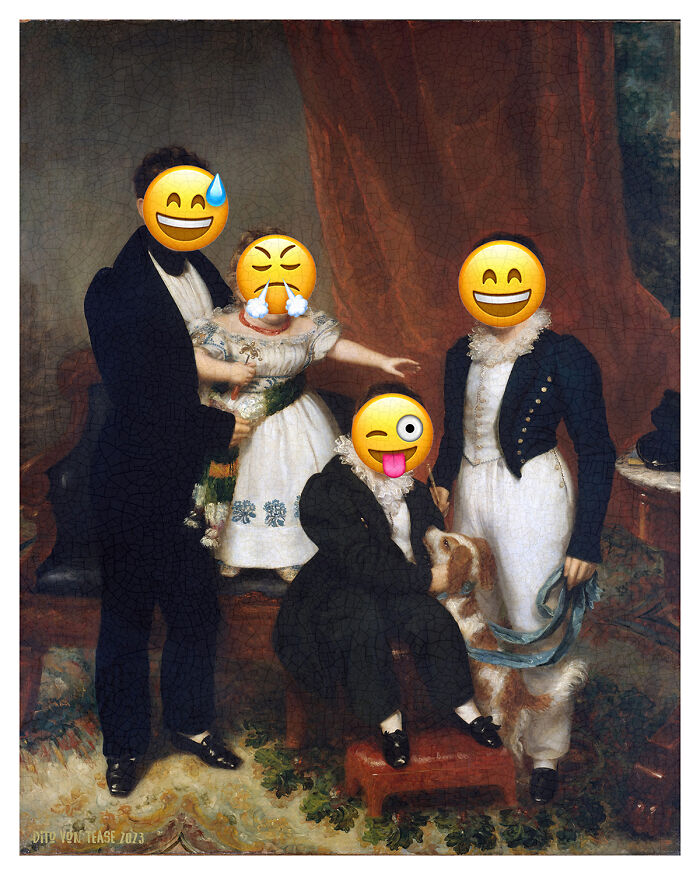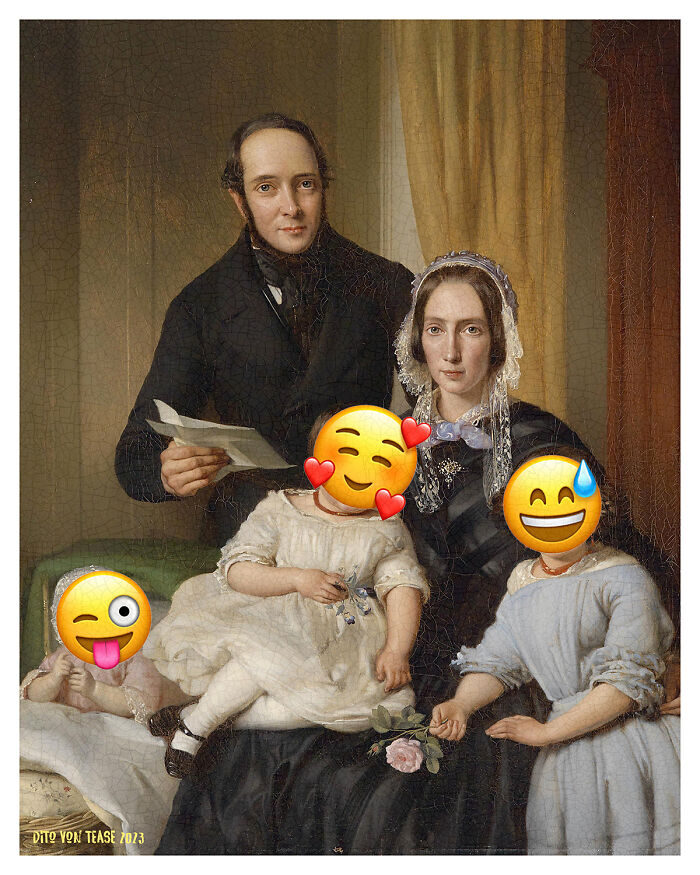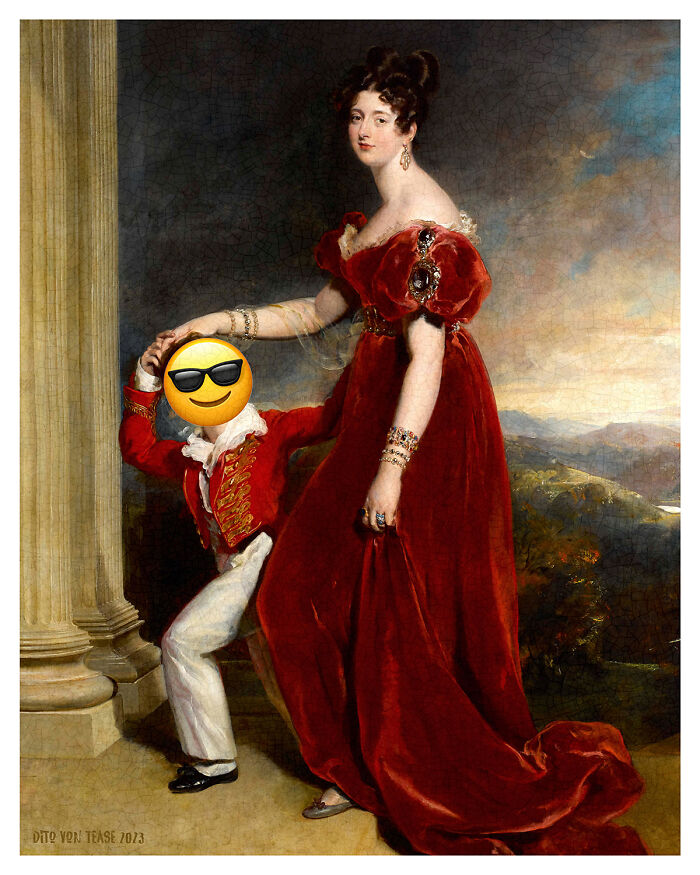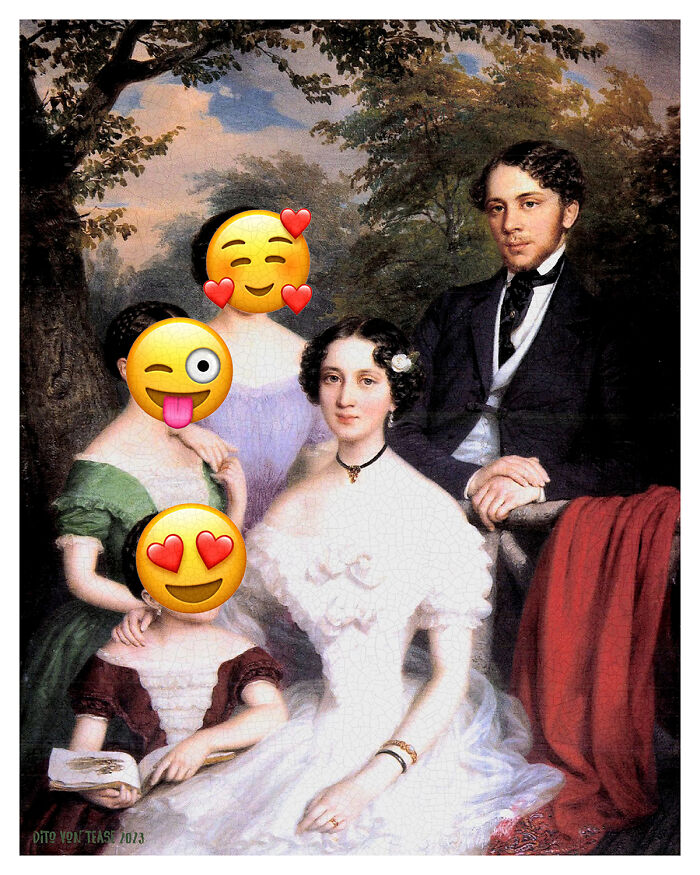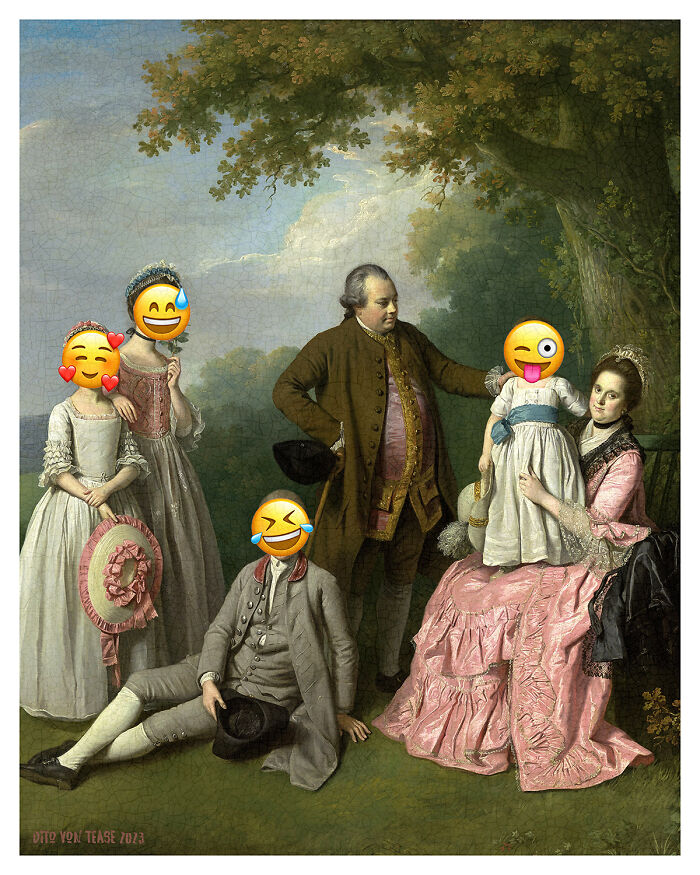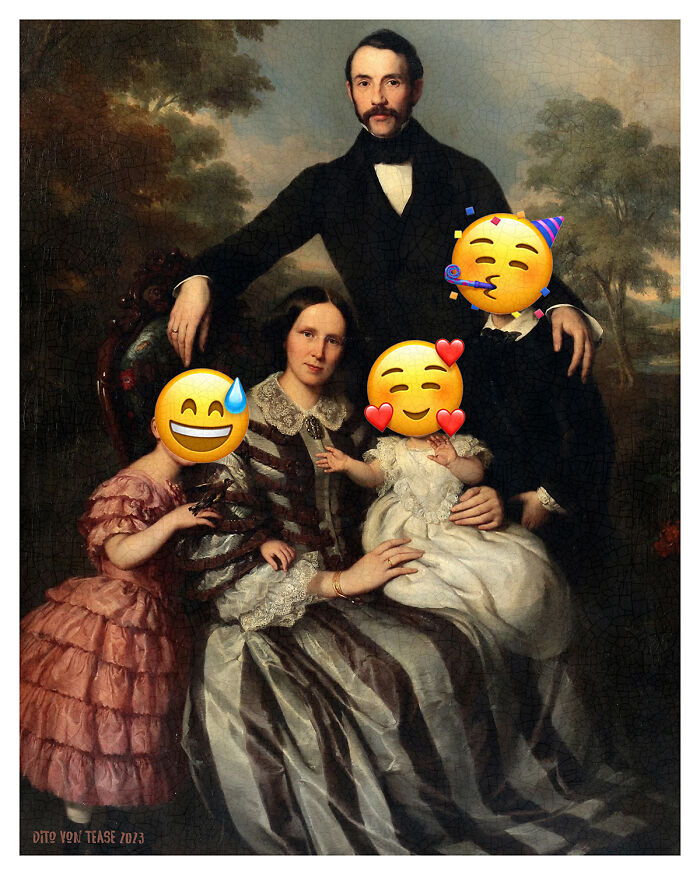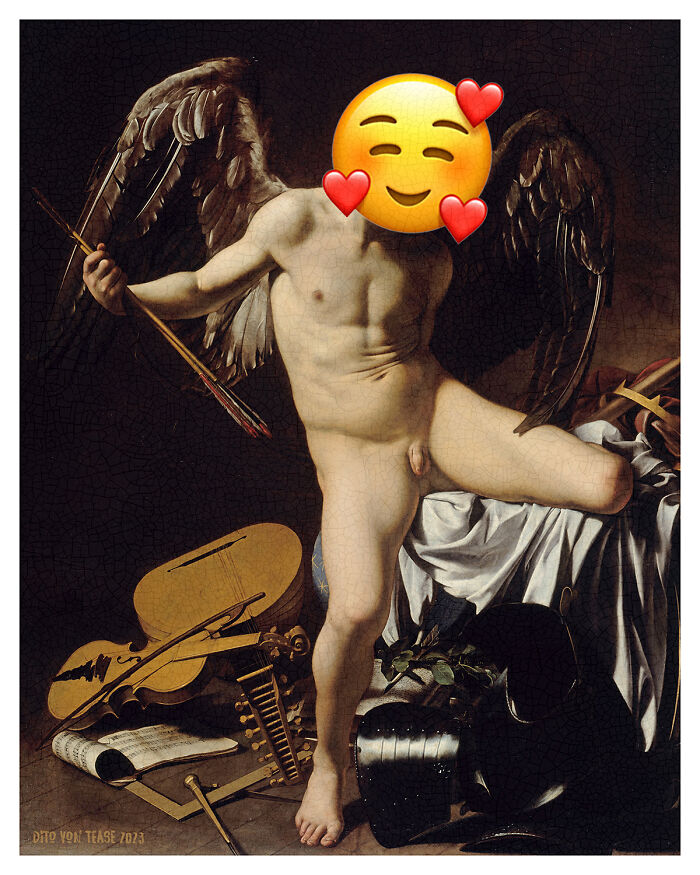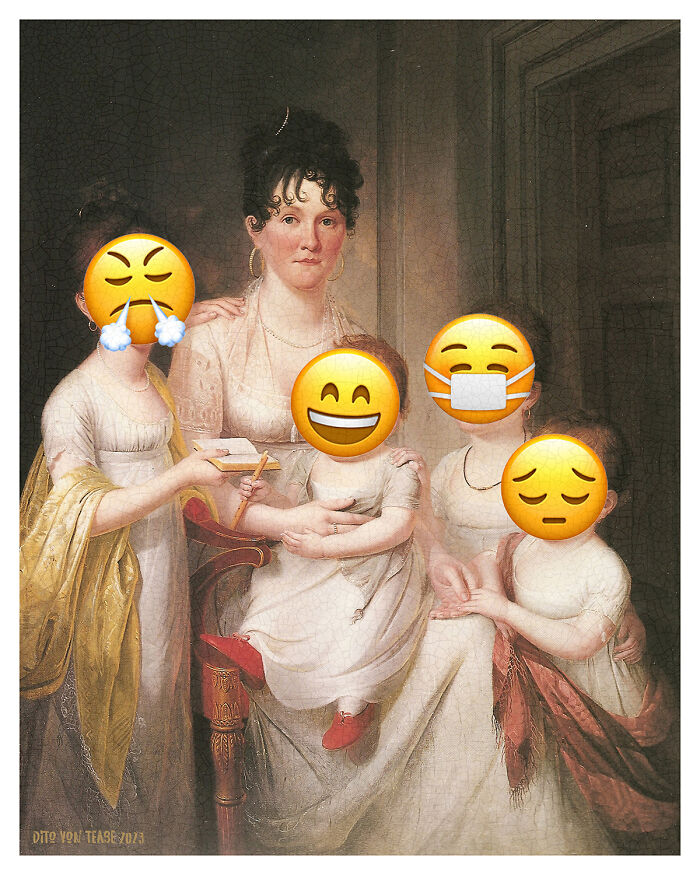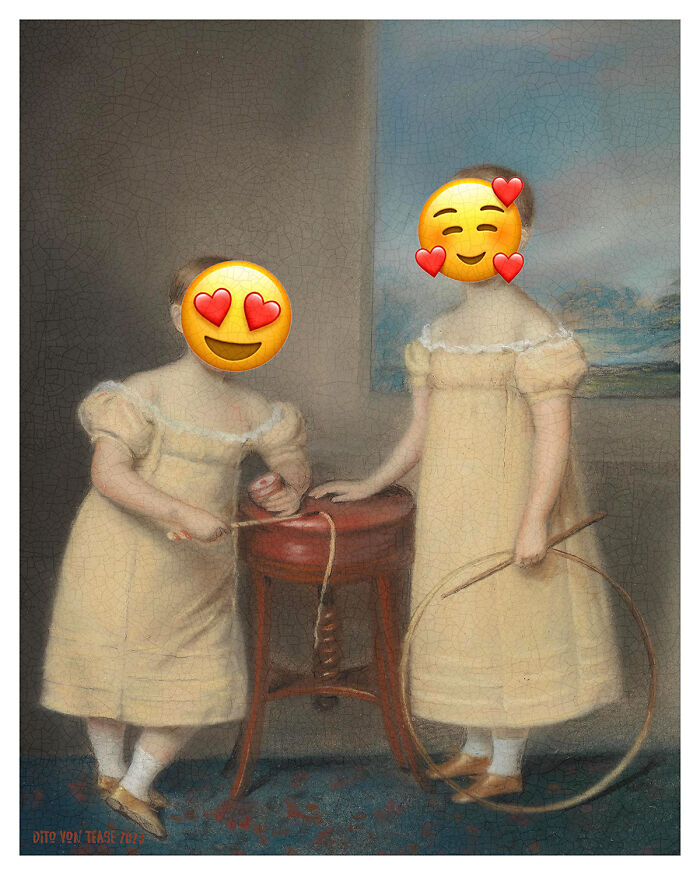From Pixels to Paintings: Artist Covered Children Faces With Emoji In The Old Paintings And The Result Is Funny
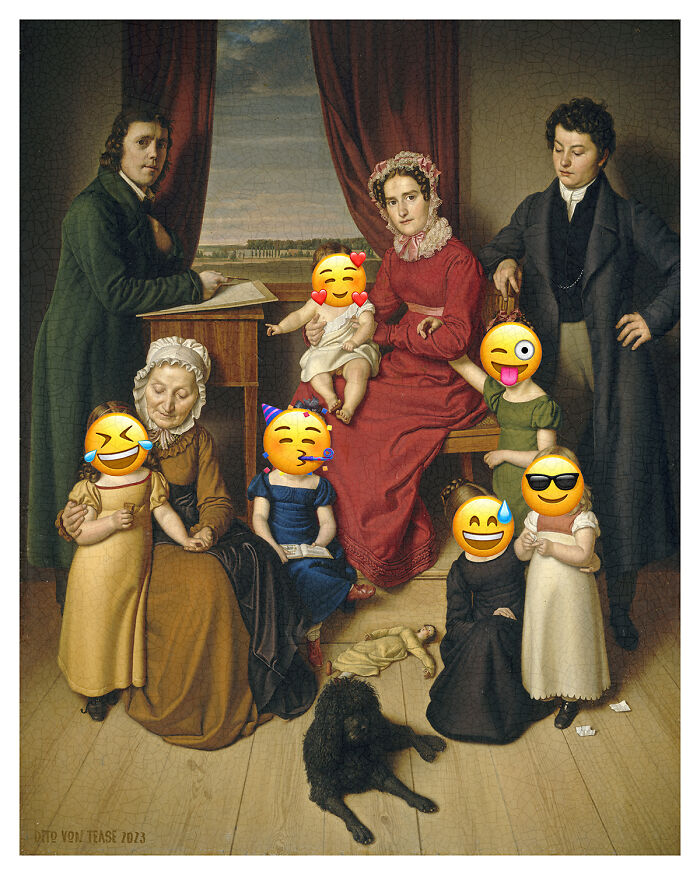
Dito Von Tease, a digital artist residing in Bologna, Italy, embraces anonymity by concealing his true identity behind his pseudonym. With an impressive educational background from renowned Italian schools specializing in fine arts, communication, and design, he embarked on a unique path, juggling dual careers as an art director in prominent advertising agencies while nurturing his passion as an independent digital artist.
More: Facebook h/t: boredpanda
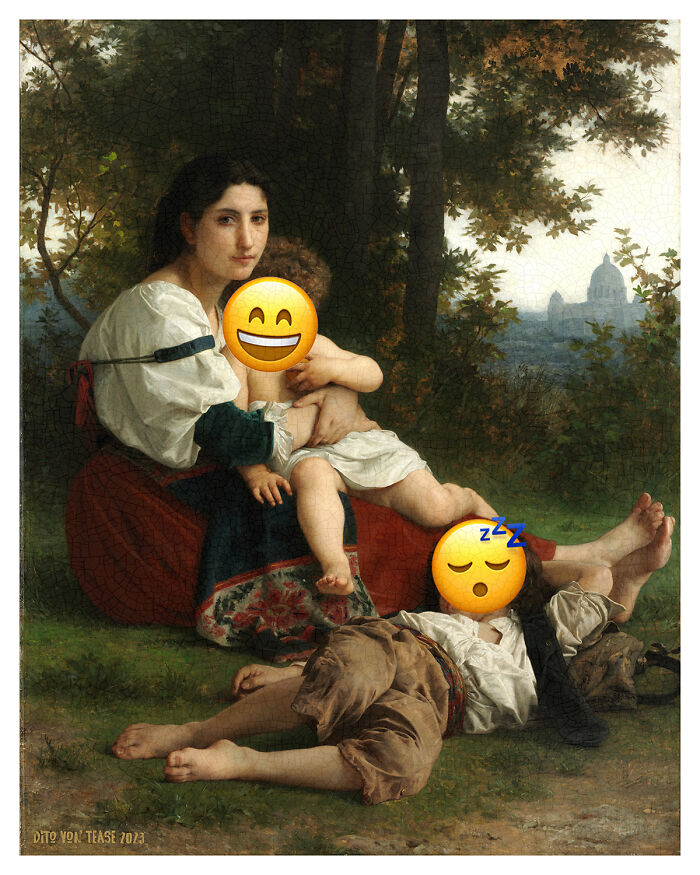
In his thought-provoking musings, Dito shares his observations on a current trend among parents: the practice of blurring or using emojis to obscure their children’s faces before sharing their photos online, citing privacy concerns. He contemplates the ethical implications of this approach and questions whether refraining from posting such photos altogether might be a more viable solution.
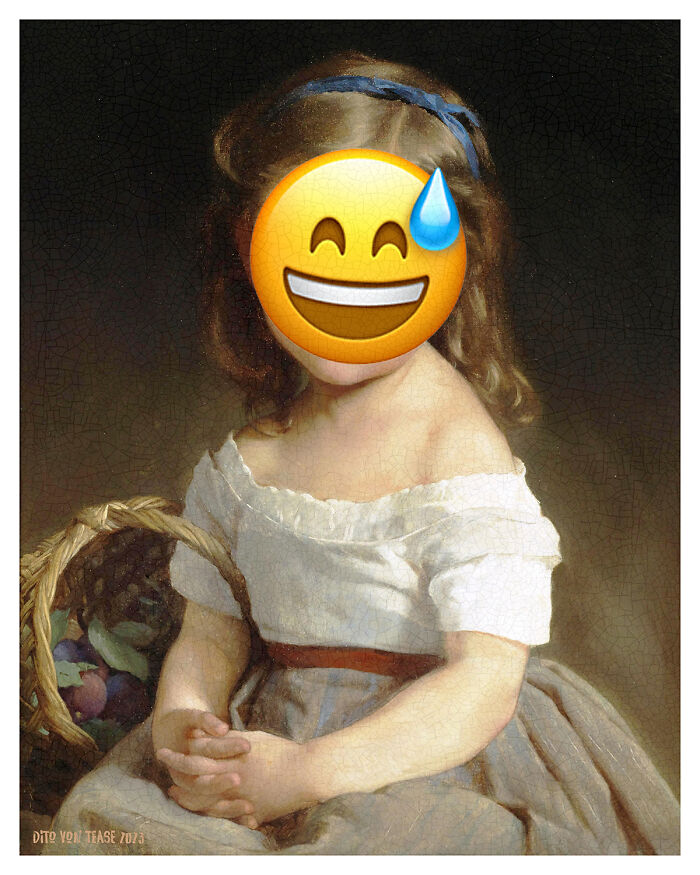
However, his ruminations take a fascinating turn as he envisions a future, perhaps a millennium from now, where historians stumble upon depictions of children from the early 2000s. Dito ponders the significance of a civilization that captured faceless bodies of children in their visual representations. Were there societal implications? Did a faceless generation emerge during that era? What about children whose faces were not obscured? Did they belong to a distinct caste? These questions sparked Dito’s imagination and inspired his latest artistic endeavor.
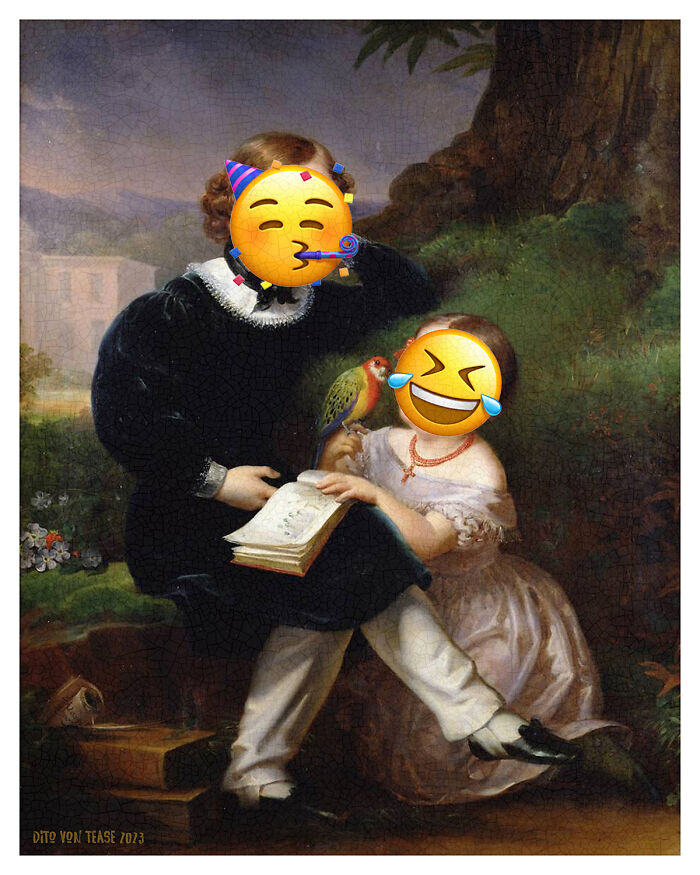
Delving into the realm of aesthetics, Dito embarked on an intriguing artistic experiment. He decided to cover his own face with emojis depicting the children from his family’s old paintings, dating back to bygone eras. The outcome of this endeavor was not only thought-provoking but also unexpectedly amusing.
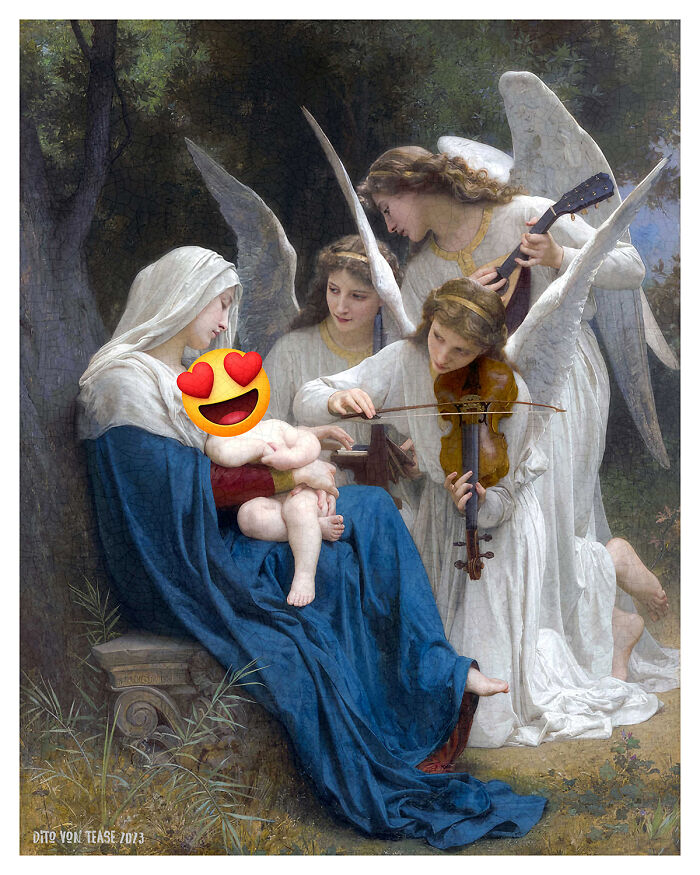
Dito Von Tease’s unique artistic approach invites contemplation on the intersection of privacy, historical representation, and the role of identity in art. By blending past and present, he challenges conventional notions of portraiture, inviting viewers to question the underlying significance of concealing or revealing faces in visual art.
